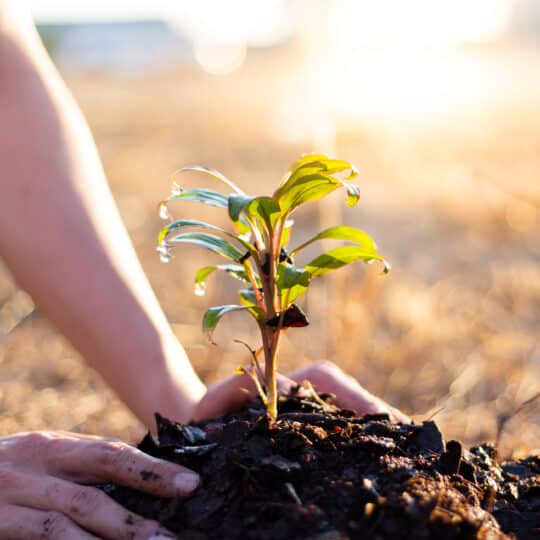What You Need to Know When Planting a New Tree
Tips for Ensuring it Thrives
Posted
March 28, 2024

Now that spring has officially sprung, your lawn and garden are waking up. This is one of two times of year that’s best for planting. If planting a new tree is on your to-do list this season, here’s how to start.
Planning for a New Tree in Spring
With moderate temperatures and more average rainfall, seasons like spring and fall are ideal times for planting. While many gardeners may be focusing on starting seeds for veggie, fruit, and flowers, planting a new tree is also something to consider. Here are some tips to keep in mind while planning what tree you want to plant and where it should go.
- Choose the Right Tree. You’ll want to plant something that will thrive in your climate. Select a native tree species that’s also well-suited to your soil type and available space.
- Select the Right Site. Plan ahead and choose a location with enough space for the tree’s mature size. Keep it away from buildings, power lines, and other obstacles. Ensure the soil drains well, it gets enough light, and the area is free from rocks and competing roots.
- Prepare the Soil. Before you plant, loosen the soil in a wide area around the site to encourage root growth. Remove any weeds, grass, or debris that could hinder the tree’s growth.
While you don’t have to wait until spring to plan, it’s important to think about these these factors to make sure you’re setting up your tree to not only survive, but thrive.
Tree Planting Process
Once you’ve got the tree and the spot is prepped, it’s time to start planting.
- Dig the Hole. Make it two to three times wider than the tree’s root ball to give the roots room to spread. The hole should be deep enough to accommodate the roots without bending or crowding them.
- Situate the Tree. Place the tree in the center of the hole, making sure the trunk is upright and the top of the root ball is level with the ground. Backfill the hole with the soil you removed, gently packing it down to remove air pockets.
- Add Water. Give the tree a thorough watering after planting to help settle the soil and reduce transplant shock. Water regularly, especially during the first year, to keep the soil moist but not drenched.
- Add Mulch. Spread a few inches of mulch around the base of the tree, but avoid piling it against the trunk. Mulch helps retain moisture, suppress weeds, and regulate soil temperature.
Now that your tree is planted, you may think your job is done! But your tree will need some extra attention, especially during the first year of its new life.
Post Tree Planting
Just like anything you plant in your garden, a tree requires regular maintenance to grow as strong and healthy as possible. Here are some tips to make sure that happens.
- Add Support. Young trees may need more support until they become established, especially if the plant is tall or situated in a windy area. Consider staking it using soft ties to avoid damaging the trunk.
- Prune as Needed. Your tree should not need a lot of pruning in the beginning. It’s always a good idea to remove any broken, dead, or crossing branches to encourage healthy growth. Avoid over-pruning, especially in the first few years.
- Monitor Regularly. Keep an eye on the tree’s growth and health, watering and fertilizing as needed. Look for signs of pests, disease, or stress, and take action promptly.
Planting a tree is a long-term commitment, but one that adds beautiful benefits to your yard. For help choosing the perfect tree, placement, and maintenance plan, contact Cardinal Lawns at 614-808-4446. If you choose a native plant and provide regular care, you’ll enjoy your tree for years to come.

Download Your FREE Summer Plant Care Guide
Help your plants make it through a hot & dry summer looking like a million bucks with our summer plant watering and maintenance guide!